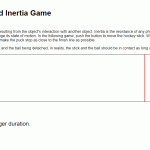Share this
Many young children enjoy math during their kindergarten years and see it as a playful activity. However, as they progress through elementary and middle school, the number of children who dislike or even fear math increases. As parents, teachers, or guardians, it is essential to find effective methods to encourage children to enjoy math and reap its benefits. The children who enjoy math tend to perform well in school. This article explores different strategies to inspire your child to understand and appreciate mathematics, enabling them to realize their potential.
Make Math Into a Game

Gamification is the use of game-like elements and designs in non-game activities to make them more enjoyable and engaging. Basically, it means adding fun and playful aspects to things we do, turning them into games. In math education, gamification has gained a lot of interest in recent years because it helps students learn and practice math in a more interactive and entertaining way. By introducing elements like rewards, challenges, and friendly competition, learning math becomes less stressful and more appealing. This approach has shown great potential in motivating students to learn math and improve their problem-solving skills while having fun at the same time.
One reason gamification is so successful is that it taps into children’s natural desire to play and solve problems. When children play math games, they are challenged to apply their skills, think critically, and work their way up through levels of difficulty. This process not only boosts their math abilities but also builds their confidence and self-esteem. Kids who may have once dreaded math class can now tackle it head-on, thanks to these engaging activities.
Math Apps
There are many math apps and games available to help children learn and practice their math skills. Some popular examples include:
1. Prodigy – This game places kids in a magical world where they solve math problems to complete quests and battle monsters. Covering various topics like addition, multiplication, fractions, and more, Prodigy adapts to each child’s learning style, providing a personalized experience.
2. DragonBox – A collection of math games that focus on algebra and geometry. DragonBox uses intuitive visuals and storytelling to help kids learn math concepts, making it enjoyable and easy to understand.
3. Math Playground – This website offers a vast selection of math games, puzzles, and activities that help children practice and develop various math skills. Kids can try out anything from number games to logic puzzles, and even word problems.
Math Board Games
If you rather let your child play non-electronic, physical board games that involve math, consider these options:
1. Prime Climb – A mathematical board game that combines strategy and arithmetic, where players multiply, divide, add, and subtract their way to the center of the board.
2. Mathopoly – A fun, engaging game that helps players practice their math skills while trying to build a successful mathematical empire.
3. Sumoku – A challenging tile-laying game where players must place numbered tiles in rows and columns so that their sum equals a multiple of a specified number.
4. Math for Love Tiny Polka Dot – A versatile card game designed to teach early math concepts like counting, pattern recognition, addition, and subtraction to young children.
5. Equate – A tile-laying game resembling Scrabble, but with equations and mathematical symbols instead of words, allowing players to build legal equations and earn points.
6. City of Zombies – A cooperative board game where players use math skills to “fight off” waves of attacking zombies, strengthening their basic arithmetic skills in the process.
Use Everyday Materials to Teach Math

One of the main reasons children find it difficult to engage with math is due to a lack of context. When only practicing math on paper, they may not see how math connects to real life.
There are many opportunities for parents to use everyday items to teach math. Here is a list of simple examples, but keep in mind that you can relate almost everything in your home or neighborhood to math.
1. Grocery Shopping – Take your child with you when you go grocery shopping. Allow them to pick out snacks, but set a budget (like $10) for them to work with. This way, they can practice their estimation and addition skills. Ask your child to compare two brands of ice cream with different quantities and prices to determine which one has a lower cost per 100mL. Before heading to the checkout, have a competition with your child to see who can guess the closest total cost for all the items in the cart.
2. Cooking – Are you baking a cake with your child? Allow them to measure the weight or volume of the ingredients. This helps them develop an intuitive understanding of measurements like kilograms and liters. They will get to understand how big a kilogram is, how much is in a liter, and so on. This kind of understanding cannot be gained simply by doing math work on paper. Other activities may include asking your child to read and follow the recipe and letting them set the oven timer.
3. Going for a Walk – Math can be found even in simple activities like going for a walk. There are many enjoyable questions you can ask your child to challenge them. For instance, doctors recommend that people should take 10,000 steps a day. When you and your child go for a walk, how many steps does each of you take? To answer this question, your child needs to look at a map, find the distance of your walking route, measure the step distance, and calculate the total number of steps. This activity greatly helps your child better understand ratio, scale drawing, and division.
4. Fractions are Everywhere – Your home is full of opportunities to learn about fractions. When making a homemade pizza, have your child divide it into 8 equal slices. As you pour milk from a jug, ask your child what fraction of milk has been poured and what fraction remains. While raking leaves together, ask your child to fill a bag with leaves up to 5/8. After filling two or three bags this way, have your child figure out how many whole bags you would have if you rearranged the leaves to fill the bags completely.
Try Using Physical Manipulatives

To make math more enjoyable and easier to understand, consider using physical manipulatives. These are hands-on math tools designed for children, such as counters, fraction blocks, and play money. By using manipulatives, you can engage in fun math games with your child. These physical tools enable children to visualize math concepts, making them more tangible and easier to grasp.
You can find physical manipulatives at textbook stores, bookstores like Indigo, and online retailers such as Amazon. Once you have purchased a set of manipulatives, read the instructions. Some of them include example activities that you can do with your child. Additionally, you can create your own games to play with your child.
Incorporate Challenges, Competitions, and Problem-Solving
It’s true that many children experience stress or anxiety when solving math problems, particularly during high-pressure situations like tests. However, if math practice is presented as a fun game, an exciting challenge, or a friendly competition, many children actually enjoy solving math problems – even simple ones like multiplication.
Instead of just allowing your child to do a bunch of math practice on paper or worksheets, try to make it more engaging. Turn it into a game with your child or have a friendly competition. To ensure your child fully engages in the activity without the typical stress associated with math, keep the following points in mind:
- Low-stakes: Give your child a safe space to practice math and have fun at the same time. Avoid scolding or yelling at your child if they answer a question incorrectly.
- Have fun: Aim to enjoy the activity with your child. Pay attention to whether they are enjoying it or showing signs of stress and adjust the activity accordingly.
- Provide a challenge: Children enjoy challenges, especially when they are presented in a low-stakes, fun context. Even children who don’t usually show interest in math often become engaged in challenges that appropriate for their level. Choose an activity that tests your child’s calculation or critical thinking skills.
You don’t need to make a complicated game with lots of rules. Just use what you have at home. Here’s a simple multiplication game using a pen, paper, and scissors:
- Take one or two sheets of white paper and cut them into 10 to 20 equal-sized cards.
- Write an integer between 1 to 100 on each card.
- Mix the cards and place them face-down in a pile so the numbers are hidden.
- Take turns picking a card from the pile, one at a time. The person who draws the card must read the number and say all the ways two numbers can be multiplied to get that number. The number of ways they come up with is their score for that turn. Write down the score on a separate piece of paper. For example, if the card says 40 and your child thought of 1 x 40, 2 x 20, and 5 x 8, your child would get 3 points.
- After all of the cards have been picked, each player adds up their points. The player with the most points wins the game.
Conclusion
You can make math fun for your child by using several strategies. These are math apps, math games, physical manipulatives, and simple but fun math homemade math games. By implementing these strategies, you will gradually help your child to appreciate the value of math and increase their confidence in their mathematical abilities. Remember, developing a love for learning should be the primary goal, and with the right approach, your child may discover the joy of math sooner than you think.
Richard Zhang, M.Ed., is an educator and a software developer with a Masters degree in education from University of Toronto and an immense passion for education and learning. Until the pandemic, Richard owned an award-winning learning centre in Toronto. For 15 years, he has taught and mentored hundreds of elementary, middle school, and high school students succeed in academics. He is also an app developer specializing in web and mobile application in educational and business sectors.











